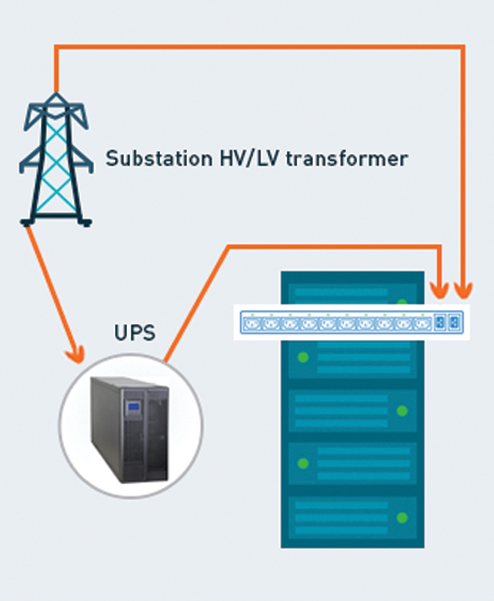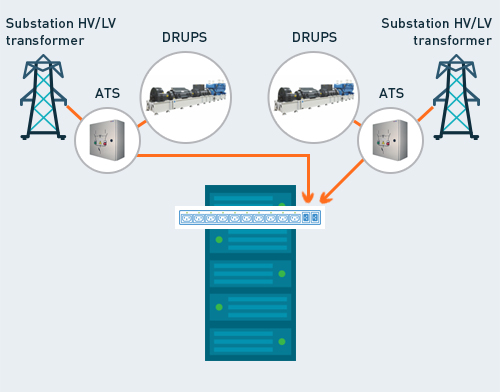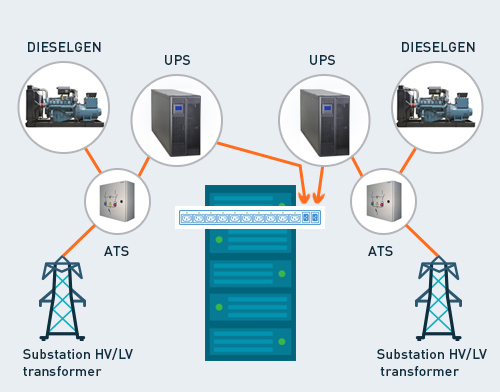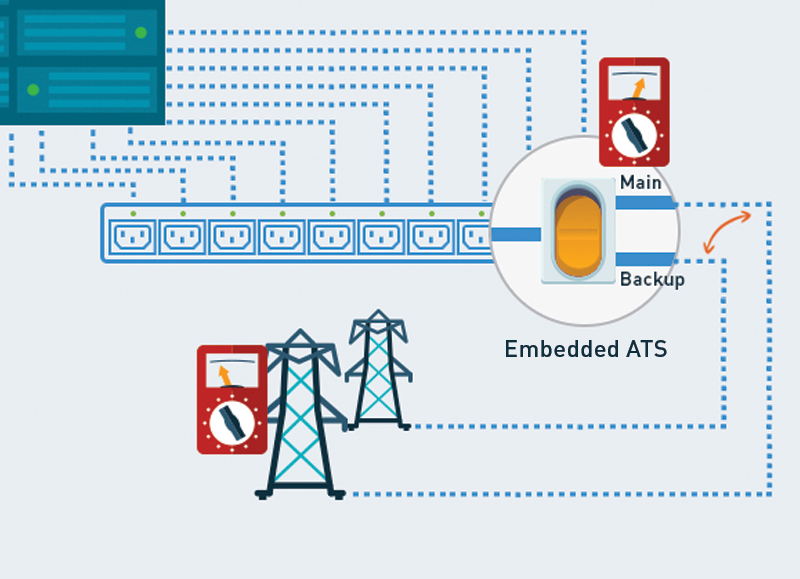Automatic Transfer Switch (ATS)

Power in today's data centers is usually supplied by 2 independent inputs, each protected by its own uninterrupted power supply (UPS) and diesel generator sets DGS (Dieselgen) or diesel rotor UPS (DRUPS).
To objectively evaluate a data center’s capability of providing a certain level of service, they can be classified into levels of reliability. Today there exist 4 levels of data center reliability.
Tier I - Basic Data Center
A Tier I data center is susceptible to performance disruptions arising from planned and unplanned activities. UPS and DGS in a Tier I data center are not mandatory, but are still used. They’re typically simple models with multiple fault points and no redundancy. At this level, data centers lack protection from intended and unintended human actions. Mistakes made by a service team can cause data center downtime.
 Tier II - Data Center with Redundant Capacity Components
Tier II - Data Center with Redundant Capacity Components
This type of data center has a single, redundant UPS, DGS, and cooling systems. Downtime is reduced at a Tier II data center, but may still occur due to accidents and planned and unplanned events. Minimum protection against intended and unintended human actions are required under Tier II.
Tier III and Tier IV data centers differ from the preceding types in their capacity for uninterrupted performance during planned operations.
Tier III - Data Center with Concurrent Capacity of Maintenance. This type is also required to maintain the data center's uninterrupted performance in most cases of intended and unintended human actions.
 Tier IV - Fault Tolerant Data Center.
Tier IV - Fault Tolerant Data Center.
This is the most reliable type of data center. In addition to the above reliability features associated with planned and unplanned events and human factor effect, it has to provide a capacity to withstand a serious failure without impacting a critical workload. Higher requirements apply to UPS and DGS redundancies.
To ensure the uninterrupted operation of a Tier III and Tier IV data center, it has to have a redundancy capacity to supply power to the components and systems through its redundant path.
Regardless how reliable the power input’s organization structure is, a single input may still fail. Here RPCM automatically switches the workload to the redundant path without interrupting power supplied to consumers.
Generally, however structured the power supply scheme is in a data center, each input has its own packet switch. If a short circuit occurs on one of the consumer devices, this will turn off the packet switch on the entire input. But if ATS is used, the entire rack will go offline.
You can purchase equipment with two power supplies to ensure reliability. But if you want the capability to remotely reset this equipment, then you’ll need a managed PDU on each power supply unit. The cost of 10 PSU and 2 managed PDU combined is exponentially higher than using equipment with a single PSU together with RPCM, which has ATS and outlet power management.
Alternative means currently available:
- managed PDU on each input + individual unmanaged ATS on each device
- managed PDU on each input + devices with two PSU
- common ATS per rack between inputs + a single managed PDU
- You can hope to encounter no problems, but if they do, you’ll have go to the facility and resolve them.


International
Azerbaijan
Belarus
Kazakhstan
Uzbekistan